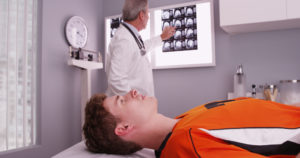There are three main structures in the human body: the muscles, nerves, and the skeleton. Chiropractic care focuses on the relationship between these structures and the patient’s health. It involves making manual adjustments to these structures, particularly the spine, but not exclusively. Chiropractors also perform other related services in the interest of correcting neuromusculoskeletal complaints with the goal of improving overall health.
Tissue Injury
Tissue injury can occur over time due to repetitive stress or a single traumatic event. In either case, it can cause a joint to become restricted in its movement. Adjustment, or manipulation, of the joint allows muscle tissue to heal by alleviating pain and restoring mobility.
Other conditions can have an effect on the main structures of the body. If this is the case, a chiropractor can provide complementary medical care by treating these aspects. On the other hand, when the neuromusculoskeletal disorder is the patient’s main complaint, chiropractic care is often the primary treatment method.
Diagnostic Skills
Chiropractic care is not appropriate for every situation. To determine whether chiropractic care would be beneficial or whether the patient should see another health care provider, a doctor of chiropractic may employ a range of diagnostic interventions. These often include x-rays for diagnostic imaging, laboratory testing, and clinical examination. If the condition warrants co-management with other providers, or if chiropractic care is unsuitable for the patient’s situation, the chiropractor will inform the patient of this and make the appropriate referrals.
Additional Services
Spinal manipulation is the mainstay of chiropractic care. Nevertheless, a DC may perform a range of other treatments and therapies. For example, it is not only the joints of the spine that may become hypermobile due to tissue injury. Manual therapy or manipulation can take place at other joints of the body as well to relieve muscle tightness and promote tissue healing. A chiropractor can also perform soft-tissue therapies.
Additionally, chiropractors may provide ergonomic training and postural education to help a patient avoid future injuries. They are qualified to provide nutritional advice, fitness coaching, and lifestyle recommendations to help patients improve overall health.
Education and Licensing
Chiropractors receive their training through a four-year postgraduate program at a chiropractic college accredited by the Department of Education. They must participate in state-approved continuing education programs on a regular basis to earn CE credits. They obtain a license to practice by passing national board exams following graduation from chiropractic college.
If you still have questions about chiropractic care or complementary treatments such as Acupuncture Santa Monica, CA, a chiropractor would be delighted to answer them. Contact someone in your area to schedule an initial consultation.
Thanks to Santa Monica Holistic for their insight into an overview of chiropractic care.

